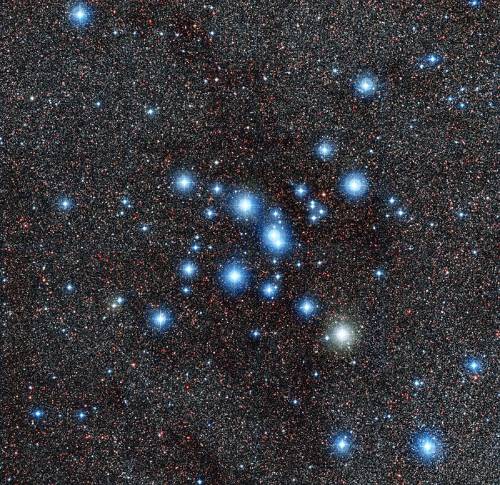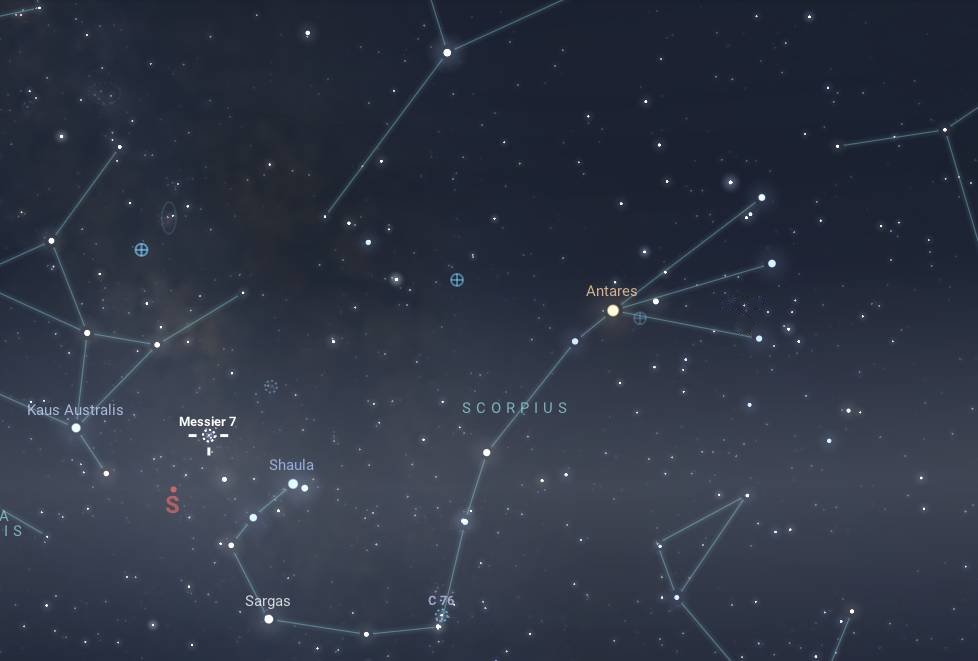Messier 7 (M7), also known as the Ptolemy Cluster or NGC 6475, is a bright open star cluster located in the constellation Scorpius, near the scorpion’s “stinger” stars, Shaula and Lesath. Positioned at approximately 980 light-years from Earth, M7 is one of the closest and most visually prominent open clusters, especially for observers in the Southern Hemisphere.
M7 has been known since ancient times; it was first recorded by the Greek astronomer Ptolemy around 130 AD, who noted it as a hazy spot in the sky. Charles Messier later added it to his catalogue in 1764, marking it as the seventh entry in his list of non-cometary celestial objects.
Composition
Messier 7 is a relatively young open cluster, with an estimated age of 200 million years. Unlike globular clusters, which contain much older, tightly bound stars, M7’s stars are more loosely distributed, spread out over a region approximately 25 light-years in diameter. This loose arrangement is typical of open clusters, which are formed from the same molecular cloud but are less gravitationally bound, meaning they will gradually drift apart over time.
The stars in M7 are mostly main-sequence stars, with a range of spectral types that include blue-white stars (indicative of hotter, more massive stars) and some yellow-white stars (slightly cooler than the blue-white stars). These stars are relatively young and much hotter and more luminous than the older stars found in globular clusters. The blue-white stars, which are especially bright and prominent in M7, contribute to the cluster’s distinctive appearance and high luminosity.

Observation
For observers in the Southern Hemisphere, Messier 7 is well-placed during the winter months from June to August, when Scorpius is high in the evening sky. This timing allows for optimal visibility, as the cluster appears almost directly overhead in dark-sky locations. M7 can also be observed from the Northern Hemisphere during late spring and summer, though it is lower on the horizon, making Southern Hemisphere locations better suited for clear views.
With an apparent magnitude of around 3.3, Messier 7 is easily visible to the naked eye as a faint, hazy patch of light. Under dark-sky conditions, it can be seen without optical aid, but its true splendour is revealed through binoculars or a small telescope, which resolve it into dozens of individual stars, highlighting the cluster’s open and loosely bound nature.
Observing Messier 7 is a delightful experience for amateur astronomers, as its brightness and relatively close distance make it a striking sight. The cluster’s open structure and colourful range of stars make it an excellent target for stargazers, offering a beautiful view that showcases the young and vibrant stars typical of open clusters.




